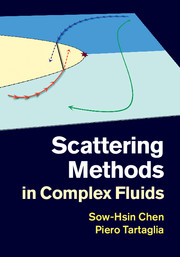5 - Experiments on structural arrest
from Part II - Structural arrest
Published online by Cambridge University Press: 05 May 2015
Summary
Introduction
Following the pioneering experiments on the glass transition in PMMA, which gave a good approximation to monodisperse hard-sphere systems, Pusey and van Megen (1989) and coworkers started a series of experiments with the aim of characterising the transition. Most of the experiments were performed through laser light scattered by density fluctuations characterising the transition from liquid to supercooled liquid and eventually to an amorphous solid. An efficient method was also used to measure the time average in a non-ergodic system using averages over different scattering volumes and wave vectors. The comparison with the predictions of MCT was performed in an extended fashion, showing a relatively good agreement with the experimental findings, to a 20% level of accuracy. The most relevant result of this important set of measurements was the detection of the structural arrest point, a result that is not easy to obtain in normal liquids due to the existence of activated dynamics or hopping effects. The latter are supposedly responsible for the crossing of the barriers that confine the system in a potential well.
MCT was subsequently applied to potentials with an attractive tail following the short-range repulsion, and lead to the behaviour described in the previous chapter on the the theory of supercooled liquids. The most relevant finding was the evidence of the existence of higher-order singularities, which were already defined and studied within MCT, in systems with short-range attractive interactions. Shortly after the predictions of MCT on the consequences of an attractive interaction in hard-sphere systems obtained, many attempts were made to experimentally demonstrate their validity. In particular, first the re-entrant glass line was detected, then the effect of the A3 singularity was shown and finally the higher singularity of type A4 was identified. The experiments on these various aspects of the behaviour of supercooled liquids are illustrated in the following sections.
- Type
- Chapter
- Information
- Scattering Methods in Complex Fluids , pp. 157 - 178Publisher: Cambridge University PressPrint publication year: 2015



